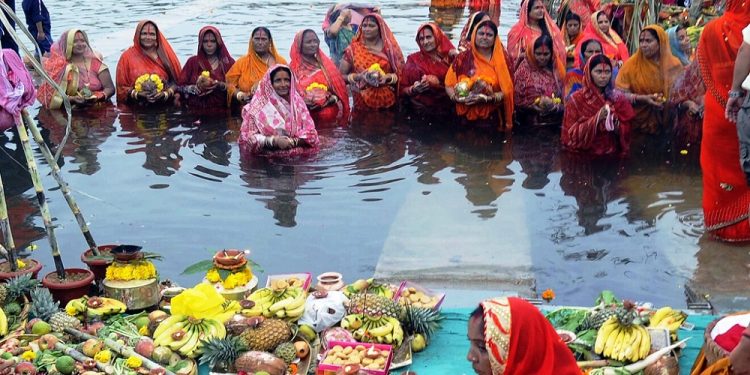
Chhath Puja
Chhath Puja is a Hindu festival that dates back thousands of years, especially in the Indian states of Bihar, West Bengal, Uttar Pradesh, Jharkhand, and southern Nepal. It is a festival that has been called one of the most eco-friendly religious festivals in the world.
Devotees do not need a temple to perform their rituals, as all of them are done on the banks of rivers or other bodies of water. It is also eco-friendly because devotees clean up the banks of whatever body of water they are celebrating in.
The use of synthetic materials such as plastic is also forbidden during the ceremony. And that is a good thing since this holiday is basically a celebration of Mother Nature.
The Significance of Chhath Puja
This holiday is technically dedicated to the sun god Surya, but it is also a celebration of all of nature as well. It is the sun that bathes everyone and everything in light and nourishes the plants that every living thing on this planet needs.
After all, without plants, not only do the herbivores die, but the carnivores will soon follow. And without either, humans cannot survive. Another divine being that is worshiped on this day is Chhathi Maiya. She is the sixth form of Devi Parvati and Lord Surya’s sister.
She is worshiped because she protects children from diseases and gives them longevity and good health. This holiday dates back to the early Vedic period and was a holiday on which sages would spend many days fasting and performing the rituals and mantras from the Rigveda.
How Chhath Puja Is Observed
This ancient Hindu festival takes place over a four-day period. It begins with Kartik Shukla Chaturthi and ends with Kartik Shukla Saptami. Below are the events of Chhath Puja as they are observed every year.
Day One
The first day of this religious folk festival is Nahaay Khaay. On this day, the devotee celebrating (called the Parvaitin) must take a holy bath. After the bath, they then have to ensure that their entire house is cleaned. They also have to clean the surroundings and the pathways to the Ghat (steps or banks leading to a water source).
A large meal is then usually cooked by the Parvaitin. A preparation of bottle gourd and lentils is prepared and served to the deity in the afternoon as Bhog. This initiates the devotee and is the last meal to be had during Chhath Puja.
Day Two
There are not as many events on the second day as on the first day. There is actually just one prohibition for devotees, and that is they are not allowed to drink water on this day. Not even a single drop of water can be ingested for the entire day.
Day Three
Devotees prepare bamboo baskets with fruit to be used as offerings, as well as rice laddus and Thekua. The entire household then accompanies the devotee to the body of water to make the Arghya offerings to the setting sun. When the devotees return home, they then perform the ritual of Kosi Bhari with other family members.
Day Four
The devotees go to the riverbank to offer an Arghya to the rising sun on this last day. When this has been completed, the protection of children and the peace and safety of the entire family is then sought from Chhathi Maiya. Devotees are then able to eat prasad and drink water to break their fast.








